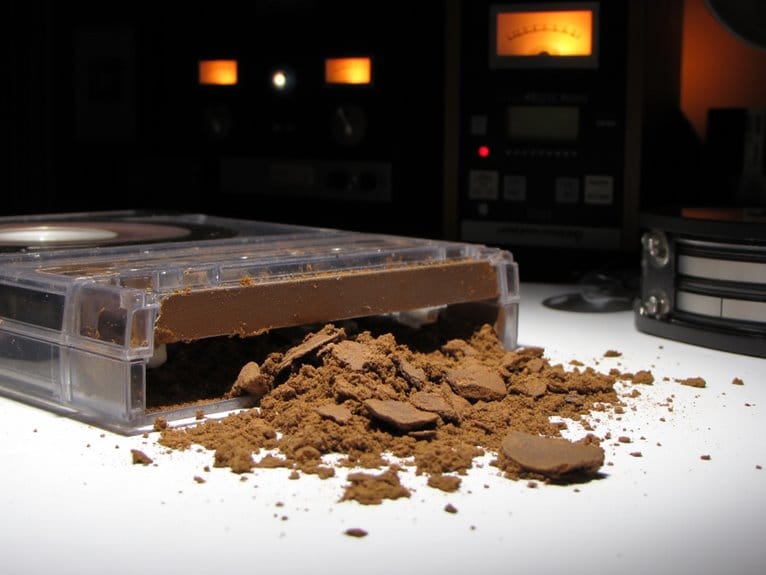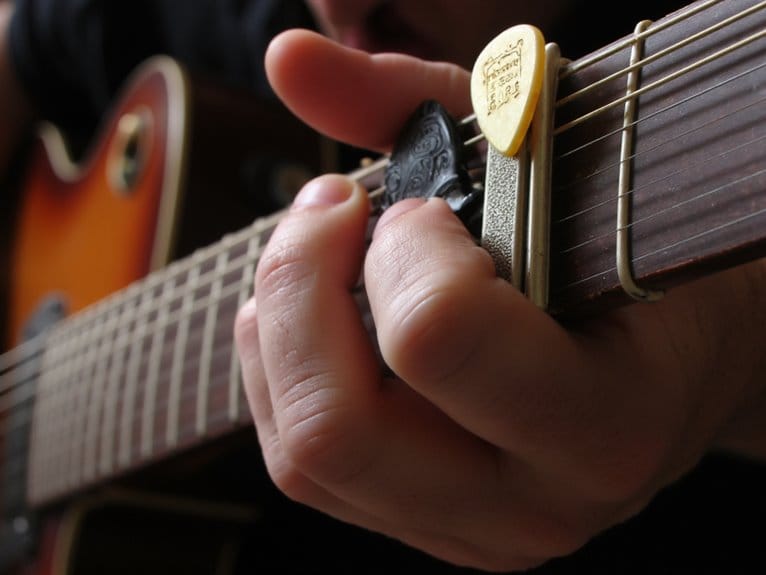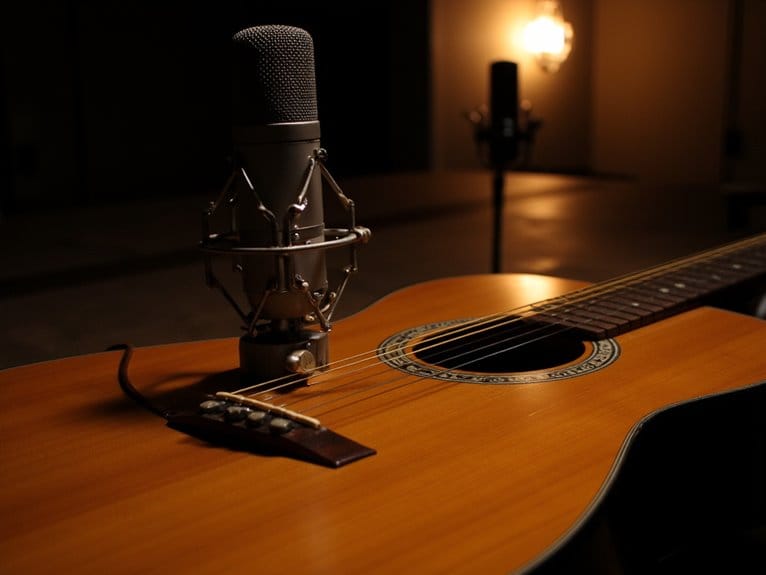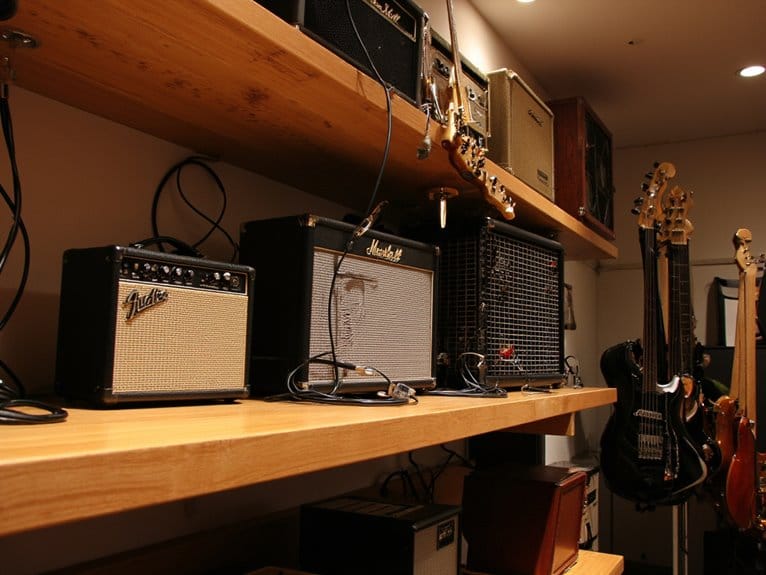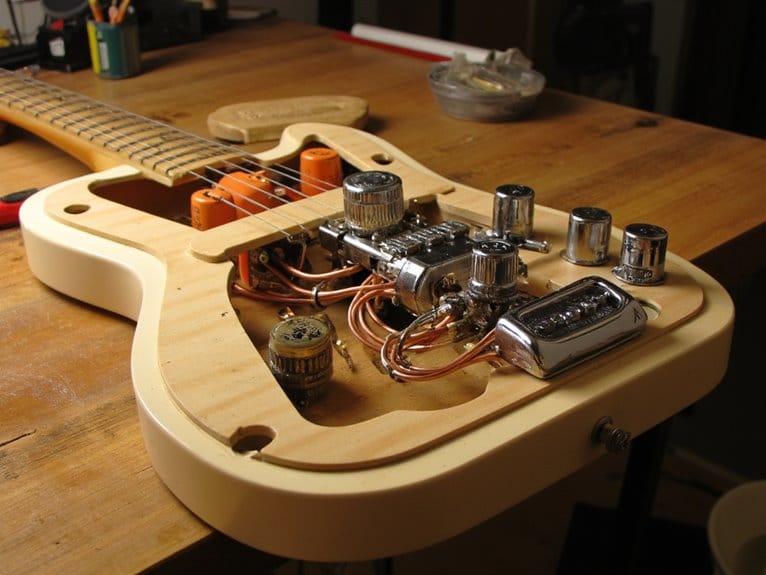Rescuing Over-Compressed Masters
You can rescue over-compressed masters using multiband compression and dynamic EQ to target specific frequency ranges, while expanders help restore lost dynamic range below set thresholds. AI-powered spectral analysis tools detect compression artifacts in real-time, and transient enhancers bring back percussive definition that heavy compression destroyed. Though you can’t fully undo permanent damage from aggressive compression, targeted multiband expansion and mid/side processing can greatly improve breathing room and stereo width. The key lies in understanding which restoration techniques work best for your specific audio challenges.
We are supported by our audience. When you purchase through links on our site, we may earn an affiliate commission, at no extra cost for you. Learn more.
Notable Insights
- Over-compressed masters suffer permanent dynamic damage, creating pumping artifacts, harsh sibilance, and loss of transient detail.
- Multiband expanders and dynamic EQ can partially restore dynamics by targeting specific frequency ranges without affecting clean sections.
- AI-powered spectral analysis tools detect compression artifacts in real-time and rebuild natural envelope shapes using machine learning.
- Transient enhancers and mid/side processing help restore percussive definition and stereo width lost during aggressive compression.
- Complete restoration is impossible due to permanent data loss, but targeted multiband treatments can achieve meaningful improvements.
Understanding the Damage: How Over-Compression Affects Audio Quality
I’ll be honest with you-after decades of working in audio production, I’ve witnessed firsthand how over-compression can systematically destroy what makes music emotionally compelling, stripping away the natural ebb and flow that gives recordings their life and character.
When engineers push compression thresholds too aggressively, you’re fundamentally flattening every dynamic peak and valley that would normally create emotional tension and release. The result? Audio distortion that manifests as pumping artifacts, harsh sibilance, and that telltale “squashed” sound that makes everything uniformly loud but paradoxically less impactful.
What’s particularly frustrating is watching transient details disappear-those crisp drum hits lose their punch, vocals sound strained, and the entire mix becomes a crowded, fatiguing mess that lacks the breathing room essential for musical expression.
Essential Tools and Techniques for Dynamic Restoration
When faced with an over-compressed master that’s been squashed beyond recognition, you’ll need a strategic arsenal of restoration tools that can breathe life back into flattened dynamics without introducing new artifacts.
Multiband compression becomes your precision instrument, allowing frequency-specific dynamic control with gentle ratios and carefully tuned attack times that preserve transient details.
Dynamic equalization targets problematic frequencies where compression created harshness, applying amplitude-triggered gain changes that restore natural movement without affecting the entire spectrum.
Expanders counteract the squashing effect by increasing dynamic range below set thresholds, while transient enhancers restore percussive definition that heavy compression destroyed.
Mid/side processing reconstructs stereo width by independently treating center and side channels, and transparent limiting with proper headroom management prevents further damage during final output stages.
Modern Technology Solutions for Compression Repair
While traditional tools require extensive manual tweaking and careful ear training, modern technology has revolutionized compression repair through sophisticated algorithms that can automatically detect and correct over-compressed audio with remarkable precision.
AI algorithms now analyze your tracks in real-time, identifying compression artifacts that would take me hours to spot manually. These systems use advanced spectral analysis to isolate frequency-specific damage, targeting problematic areas without affecting pristine sections of your mix.
I’ve found that dynamic restoration technologies can rebuild natural envelope shapes using machine learning models trained on thousands of professional masters. Advanced systems can also perform multiband compression repair, allowing for frequency-specific restoration that addresses different spectral regions independently.
This compression artistry extends beyond simple decompression, intelligently reconstructing lost transients and breathing life back into flattened dynamics while maintaining industry loudness standards for streaming platforms.
Working Within Limitations: What Can and Cannot Be Recovered
Although modern restoration tools have made impressive strides in audio repair, I’ve learned through countless frustrating sessions that over-compression creates permanent damage that can’t be fully undone.
When you’re dealing with severely compressed masters, dynamics recovery becomes a delicate balancing act between improvement and further degradation. You can achieve partial restoration through multiband expansion targeting specific frequency ranges, but transient preservation remains limited once those peaks are clipped beyond recognition.
I’ve found that spectral repair tools help reduce compression artifacts, though they can’t regenerate lost dynamics without introducing transparency issues.
The harsh reality is that makeup gain permanently raises your noise floor, and those flattened transients simply don’t exist anymore, making complete recovery impossible despite our best technological efforts.
On a final note
You’ve learned the fundamentals of rescuing over-compressed masters, though I’ll be honest-you can’t work miracles with severely damaged audio. Modern multiband expanders, spectral repair tools, and AI-driven restoration software offer your best chances for recovery, but they’re not magic wands. Focus on what’s salvageable: restoring some transient detail, reducing artifacts, and improving overall listening experience. Remember, prevention beats restoration every time, so advocate for better mastering practices moving forward.

